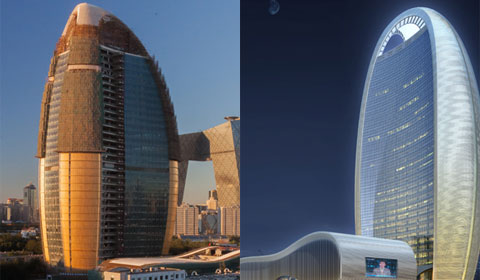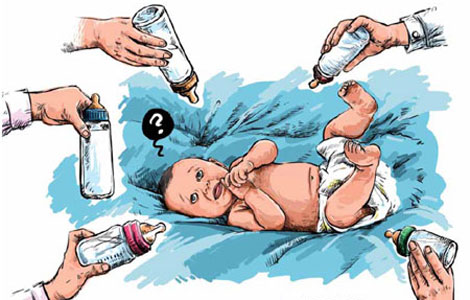Full Text: Development and Progress of Tibet
Updated: 2013-10-22 13:17
(Xinhua)
|
||||||||
II. Economic Growth and Improvement of the People's Livelihood
Developing the economy is an important way to ensure the basic rights of all ethnic groups in Tibet, especially their rights to subsistence and development. The establishment of a modern economy in Tibet and its development has laid a solid material foundation for the progress of various undertakings in the region.
Economic growth constantly enhancing people's living standards
Following the peaceful liberation of Tibet, the Central Government has always given top priority to helping Tibet develop its economy, enhance its people's living standards, and change its impoverished and backward situation. It has issued a series of favorable policies, and made great achievements in promoting Tibet's economy. Currently a relatively complete socialist market system has been established in the region, and historical leapfrog development has been realized in terms of economic aggregate. Tibet's economy is growing steadily and quickly. The Gross Regional Product (GRP) of Tibet rocketed from 129 million yuan in 1951 to 70.1 billion yuan in 2012, representing an annual growth of 8.5 percent on average. The per capita GRP reached 22,900 yuan. Since 1994 Tibet has realized double-digit growth for 19 consecutive years, with an annual growth rate of 12.7 percent on average.
Substantial improvements have been made in the people's lives and their living standards. The per capita net income of farmers and herdsmen in Tibet had maintained double-digit growth for 10 consecutive years, reaching 5,719 yuan in 2012. The per capita disposable income of urban dwellers was 18,028 yuan. The building of a new socialist countryside, initiated in 2006, has greatly benefited local farmers and herdsmen, especially through its low-income housing projects. By the end of 2012, a total of 408,300 low-income houses were built, providing housing to 88.7 percent of local households of farmers and herdsmen. All farmers and herdsmen will have moved into safe modern houses by the end of 2013. In 2012, the per capita floor space of farmers and herdsmen was 28.77 sq m, and that of urban dwellers 36.14 sq m. In rural areas, infrastructure has been improved to provide the necessary facilities for the local population, including water, power, transportation, telecommunication, natural gas, radio and television, and postal services. Some 90 percent and 99.7 percent of Tibetan townships now have access to postal service and road network, respectively, and 94.2 percent of administrative villages could be reached by road. A total of 1.93 million farmers and herdsmen now have access to safe drinking water, and 150,000 rural households are using clean biogas. In addition, over 95 percent of rural households use iodized salt.
As life improves, the people are beginning to have more choices in consumption. Refrigerators, color televisions, telephones, computers, washing machines, motorcycles, mobile phones and other consumer goods have entered ordinary households. In 2012, for every 100 urban households in Tibet there were 27 cars, 16 motorcycles, 86 refrigerators, 129 color TVs, 63 computers and 88 washing machines. According to the "CCTV Economic Life Survey" jointly hosted by the National Bureau of Statistics, China Post Group, and China Central Television (CCTV), Lhasa topped the "happiness index" for five consecutive years.
Adhering to green and sustainable development
The economy of old Tibet was supported by farming, animal husbandry and handicrafts, very close to a backward natural economy. With the strenuous efforts of the local people, Tibet has established a modern economic system with local characteristics. Putting the people's interests first and seeking green and sustainable development, Tibet has adopted rigorous measures to rein in energy-extensive, high-pollution and high-emission industries. Integrating socioeconomic progress and environmental protection, Tibet strives to safeguard the long-term interests of its people.
Farming and animal husbandry are Tibet's traditional industries and also the supporting pillars of its economy. For decades such policies have been followed that allow the farmland and grassland to recuperate on a regular basis. And by delegating managerial authority to lower levels, cancelling the old agricultural tax, increasing capital and technical investment, and promoting comprehensive productivity, Tibet has realized balanced and sustainable development in farming and animal husbandry. The annual grain production in recent years stands above 900,000 tons. Tibet is vigorously developing agricultural products with local characteristics, and the added value of its primary industry increased from 128 million yuan in 1959 to 8.038 billion yuan in 2012, growing by 4.7 percent annually.
There was no modern industry in old Tibet, but after more than 60 years of development, modern industry has been established in Tibet from scratch, and it has grown considerably in size. Today Tibet has a modern industrial system comprising over 20 industries, including energy, light industry, textiles, machinery, mining, building materials, chemical industry, food processing, folk handicrafts and traditional Tibetan medicine. The total industrial output value skyrocketed from 1.4 million yuan in 1956 to 10.591 billion yuan in 2012. The major industries with local characteristics have been expanding in scale, and tertiary industry is also growing rapidly. In 2012, Tibet welcomed domestic and overseas tourists on 10.584 million occasions, including foreign visitors on 194,900 occasions. In the same year, the tourism industry in Tibet generated 12.65 billion yuan in revenue. The proportionate layout of Tibet's industrial structure in terms of primary, secondary and tertiary industries was 11.5 : 34.6 : 53.9.
Modernization and urbanization constantly improving people's lives
In the old days Tibet had no roads in the modern sense, but today a comprehensive transportation system including road, aviation, railway, and pipeline transportation is being developed and improved. In 2012 Tibet had 8,896 km of roads with sub-high-grade surface or better, and the total length of road opened to traffic reached 65,200 km. Every county and township now has access to road transportation. Sixty-two counties are accessible by tarmac roads. In 2006 the Qinghai-Tibet Railway began operation, introducing railway transportation into Tibet for the first time in history. The construction of the railway line connecting Lhasa and Shigatse will be completed in 2014. In 2011 Tibet's first expressway opened to traffic, linking Lhasa and Gongga Airport. By the end of 2012 Tibet had five airports, and nine airlines had operations there. Now 34 domestic air routes link Tibet with other parts of China, with Gongga Airport (Lhasa) as the main terminal supplemented by Bamda Airport (Qamdo), Mainling Airport (Nyingchi), Gunsa Airport (Ngari), Heping Airport (Shigatse). Before the peaceful liberation of Tibet only one small power station, with a capacity of 125 kw, provided electricity to the small number of privileged aristocrats. Today's Tibet has a rapidly growing power industry. With hydraulic power as the main energy source, Tibet is also developing geothermal power, wind power, solar power and other new energies that complement each other. In 2012 the total installed generating capacity reached 1.23 million kw, and the coverage of power supply was 100 percent. In Lhasa, the city heating project started trial operation, providing heating to 40 percent of the city's households by the end of 2012. In old Tibet people used to carry goods by themselves or use pack animals, and mail was delivered by courier stations. This is now history. Currently a network of optical cable, satellite and long-distance telephone lines has been established in the region, and all places above county level are now covered by 3G signals. Every township has broadband connection and every village has telephone services. In 2012 the number of households using landline telephone reached 2.76 million, and there were 91 telephones for every 100 persons. The number of households with Internet connections users was 1.47 million, with a coverage rate of 33.3 percent.
Urbanization has brought the fruits of modern civilization to people living in Tibet. Prior to the peaceful liberation of Tibet, only a handful of places were inhabited by any concentration of people, and only Lhasa, Qamdo and Shigatse could be called towns. The area of the town proper of Lhasa then was less than three square kilometers. In recent years Tibet has been promoting intensive, intelligent, green and low-carbon urbanization, which is a new-type urban system that centers on Lhasa City and radiates to prefectures, counties, border towns and towns with cultural attractions, in an attempt to attract more industries and residents. By 2012 Tibet had two cities and 140 towns, with an urbanization rate of 22.75 percent.
The reform and opening-up drive has quickened Tibet's development.
Over the past 30 years or more, through reform and opening up, Tibet has been proactively promoting commerce, foreign trade and tourism. It has increased exchanges with other parts of China as well as communication and cooperation with foreign countries. In 1993 Tibet began to develop the socialist market economy with the rest of the country, developing into a new system within the same framework. Reforms have been carried out in the pricing and circulation of goods and materials, grains, and consumer goods, all of which have entered the market system. Currently Tibet is incorporated into the national market system. Commodities from all over the nation and across the world keep flowing into Tibet, enriching the urban and rural markets as well as the lives of the people. At the same time, well-known and quality products with local characteristics and folk handcrafts are transported to other parts of the country in large quantities.
Economically, Tibet is now more and more closely linked to the world. In 2012 the total volume of its foreign trade reached 3.424 billion U.S. dollars, more than 850 times that of 1953, which stood at 4 million U.S. dollars, with an annual growth rate of 12.1 percent. By the end of 2012 actualized foreign investment in Tibet was 470 million U.S. dollars. Taking advantage of its geographical position, Tibet is strengthening friendly cooperation with India, Nepal and other neighboring countries. To promote border trade, it is building a "commodity passageway" to South Asia via the land route, and has built trading centers in such port cities as Gyirong, Zhangmu, Yatung, Pulan and Riwu.
 Teacher killed, two wounded in Nevada middle school shooting
Teacher killed, two wounded in Nevada middle school shooting
 Smog wraps northeast, schools forced to close
Smog wraps northeast, schools forced to close
 Architect looks to the big picture
Architect looks to the big picture
 Teachers, students divided over Gaokao reform plan
Teachers, students divided over Gaokao reform plan
 Dogfight looms over jets
Dogfight looms over jets
 Peak season for fall foliage in Beijing
Peak season for fall foliage in Beijing
 Train carrying carrying oil, gas derails in Canada
Train carrying carrying oil, gas derails in Canada
 30,000 turn out in Beijing Marathon
30,000 turn out in Beijing Marathon
Most Viewed
Editor's Picks

|

|

|

|

|

|
Today's Top News
Building a bridge of hearts in the heartland of the US
Li-Medvedev meeting to boost cooperation
China issues white paper on Tibet's development
Hollywood must think bigger about China
Nation witnesses launch of luxury rental businesses
Obama vows to get healthcare website fixed
US OKs Alibaba structure
Economy to see 'good ending' in Q4
US Weekly

|

|







